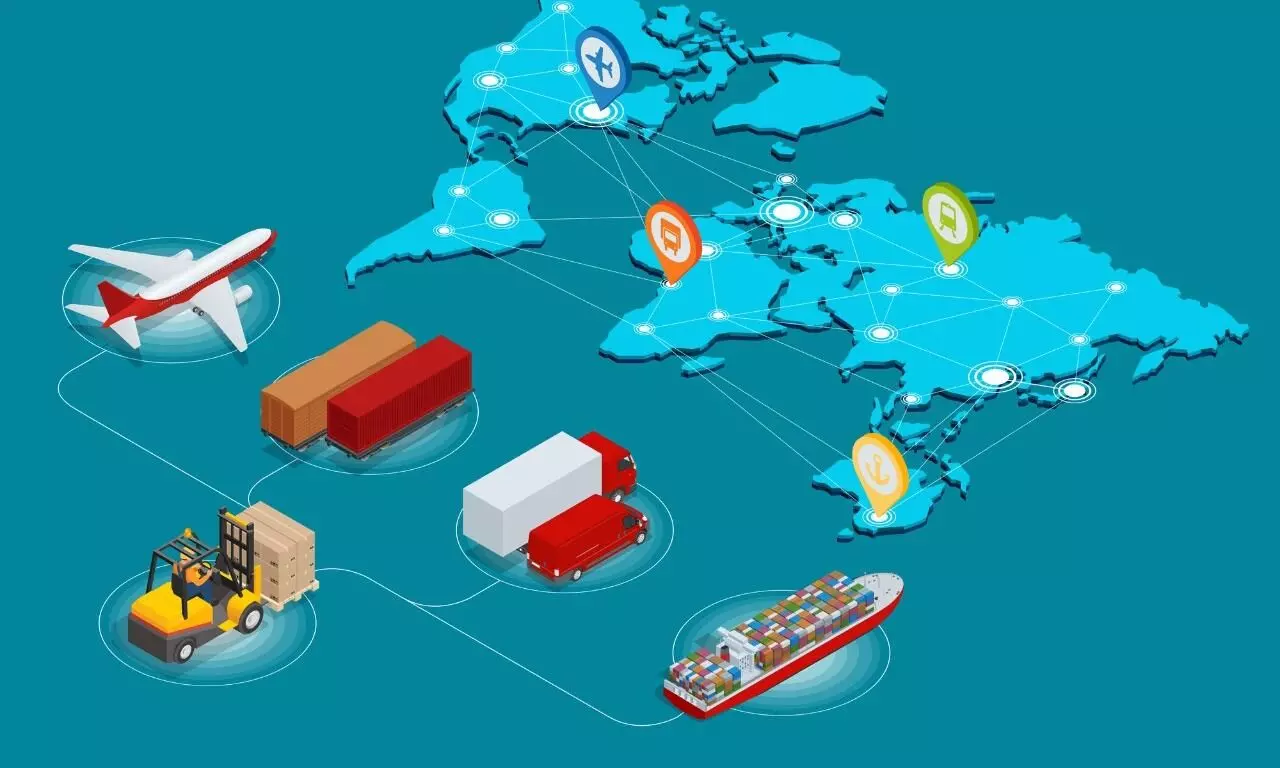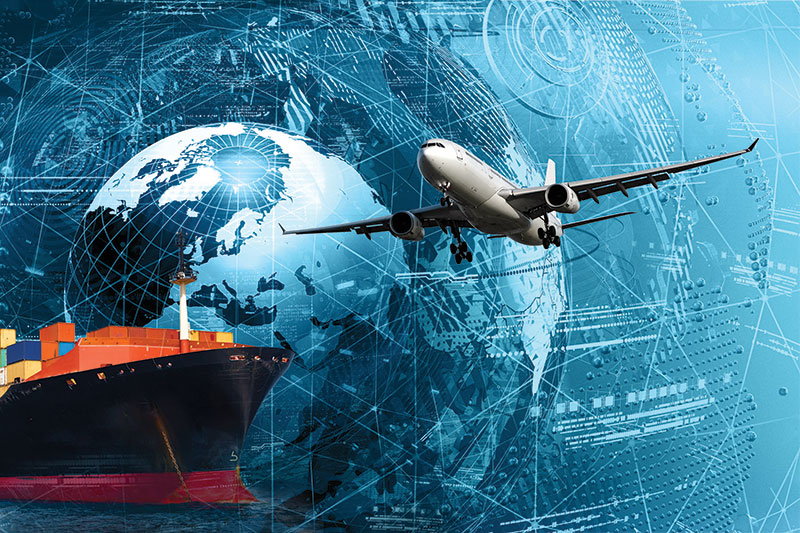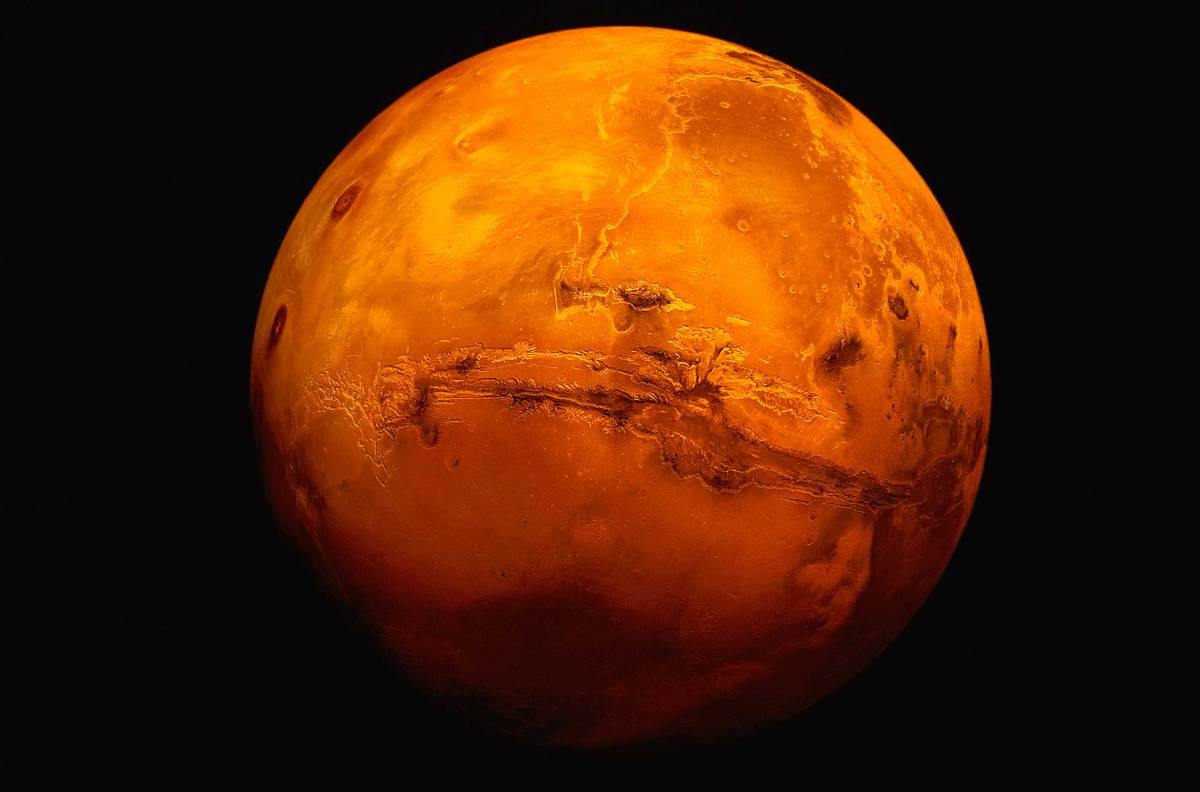Trading Blocs, Not Trade Wars: Why the World Isn’t Sliding Into a Great Depression
In 1944, as the ashes of World War II still smoldered, a group of visionaries met at Bretton Woods to imagine a new world economy. At that time, global trade was minuscule. The entire world GDP was less than $10 trillion in today’s dollars, and much of that was locked within colonial empires, war-torn economies, and protectionist walls. Fast forward to today, and each of the world’s major regional trading blocs—on its own—is larger than the entire global economy of 1944.
This is a profound shift. It’s also why, despite all the hand-wringing about the weakening of the World Trade Organization (WTO) and the rise of tariffs, the world is not on the brink of another Great Depression. Quite the opposite. We’re witnessing a decentralized reconfiguration of global trade into resilient, regionally integrated economies that are more shockproof than ever.
The Major Trading Blocs Powering the World Economy
Let’s look at some of the major regional trading blocs that now anchor global commerce:
-
European Union (EU)
-
27 nations, a common market, and a combined GDP of over $17 trillion
-
The most mature and sophisticated economic bloc in the world
-
A model for supranational governance and regulatory harmonization
-
-
USMCA (United States–Mexico–Canada Agreement)
-
Formerly NAFTA, this North American bloc boasts a GDP of over $25 trillion
-
Integrated supply chains and shared standards across manufacturing, agriculture, and services
-
-
RCEP (Regional Comprehensive Economic Partnership)
-
Covers 15 Asia-Pacific countries including China, Japan, and ASEAN nations
-
World’s largest free trade agreement by population and GDP (~$26 trillion)
-
A signal of Asia’s ascendancy and intra-regional trade strength
-
-
Mercosur
-
South America’s largest trading bloc, led by Brazil and Argentina
-
Aims to harmonize tariffs, coordinate policies, and promote trade within Latin America
-
-
African Continental Free Trade Area (AfCFTA)
-
Encompasses 54 African nations with a vision to create a $3.4 trillion single market
-
Could be transformative for intra-African trade, infrastructure, and industrialization
-
-
CPTPP (Comprehensive and Progressive Agreement for Trans-Pacific Partnership)
-
Includes countries like Japan, Canada, Australia, and several ASEAN members
-
A response to stalled WTO reforms and U.S. withdrawal from TPP
-
1944 vs. Today: A World of Difference
In 1944, the world was economically fragile, politically unstable, and deeply inward-looking. Protectionism and isolationism were dominant trends that contributed to the Great Depression and the rise of fascism. Trade was seen as a zero-sum game.
Today, every major regional bloc dwarfs the global economy of 1944. The EU, USMCA, and RCEP each possess GDPs several times larger than the entire postwar world economy. And unlike in the 1930s, nations have institutional memory. They know that when trade collapses, prosperity collapses—and extremism fills the void.
Regional “Mini-WTOs” Are Not the End of Globalization
Critics say the WTO is being sidelined, and they’re not wrong. Disputes over agricultural subsidies, intellectual property, and digital services have bogged down multilateral negotiations. The Appellate Body has been paralyzed for years. But this doesn’t mean global trade is dying—it means it's evolving.
Each regional trade agreement now functions like a “mini-WTO,” setting its own rules, mechanisms for dispute resolution, and enforcement frameworks. These aren’t replacements for the WTO—but they serve as buffers against chaos and laboratories for experimentation.
In fact, they may be the building blocks for a WTO 2.0—a more democratic, more inclusive, and more flexible system.
Why “Trade War” Is an Oxymoron
Let’s be clear: a trade war is a contradiction in terms. Trade is not war. It is a win-win proposition. It’s about comparative advantage, specialization, and mutual benefit—a truth first articulated by David Ricardo in the 19th century and confirmed by countless modern studies.
When countries raise tariffs to "punish" their trading partners, they inevitably hurt themselves. Input costs rise. Inflation ticks up. Jobs tied to exports vanish. And consumers bear the brunt of it all. So yes, while trade policy is sometimes wielded like a weapon, it is—ironically—a very blunt one that often boomerangs.
The Real Need: A New Global Trade Paradigm
Despite the resilience of regional blocs, the world still needs a global conversation—not about domination or “decoupling,” but about justice, sustainability, and shared prosperity. The Bretton Woods system worked for its time. But that time has passed.
What we need now is a new multilateral trade architecture that reflects:
-
Digital trade realities
-
Climate commitments
-
Labor and human rights
-
Equitable access for developing nations
Such a framework cannot be imposed. It must be co-created—with respect, mutual understanding, and visionary leadership.
A Starting Point for the Conversation
The book Rethinking Trade: A Blueprint for a Just and Thriving Global Economy offers exactly this: a fresh, holistic approach to what global trade can become in the 21st century. Not a zero-sum scramble for markets, but a collaborative blueprint for planetary prosperity.
In Conclusion
No, we’re not headed for another Great Depression. And no, globalization hasn’t died. It’s being restructured—region by region, bloc by bloc, partnership by partnership. The world is too interconnected, too experienced, and frankly too smart to return to the mistakes of the 1930s.
Let’s stop using the language of war for the practice of peace.
Let’s rethink trade—not to dismantle it, but to elevate it into something worthy of our shared future.
व्यापारिक युद्ध नहीं, व्यापारिक संघ: क्यों दुनिया एक और महामंदी की ओर नहीं बढ़ रही है
1944 में, जब द्वितीय विश्व युद्ध की आग बुझी ही थी, कुछ दूरदर्शी नेताओं ने ब्रेटन वुड्स में एक नई वैश्विक अर्थव्यवस्था की कल्पना की। उस समय वैश्विक व्यापार नगण्य था। पूरी दुनिया की GDP, आज के डॉलर में, $10 ट्रिलियन से भी कम थी—और उसका बड़ा हिस्सा उपनिवेशों, युद्धग्रस्त अर्थव्यवस्थाओं और संरक्षणवाद की दीवारों में बंद था।
आज, प्रत्येक प्रमुख क्षेत्रीय व्यापारिक संघ—अपने-अपने दम पर—1944 की पूरी वैश्विक अर्थव्यवस्था से बड़ा है।
यह एक गहरी और परिवर्तनकारी सच्चाई है। यही कारण है कि, भले ही आज WTO (विश्व व्यापार संगठन) कमजोर हो रहा हो और टैरिफ बढ़ रहे हों, फिर भी दुनिया एक और महामंदी के कगार पर नहीं है। बल्कि, हम देख रहे हैं कि वैश्विक व्यापार क्षेत्रीय स्तर पर अधिक लचीला और टिकाऊ हो रहा है।
दुनिया के प्रमुख व्यापारिक ब्लॉक
यह रहे वे प्रमुख क्षेत्रीय व्यापारिक संघ, जो आज वैश्विक व्यापार की रीढ़ हैं:
-
यूरोपीय संघ (EU)
-
27 देश, एक साझा बाजार, और कुल GDP $17 ट्रिलियन से अधिक
-
सबसे विकसित और परिष्कृत व्यापारिक ब्लॉक
-
कानून और नियमन में गहन समन्वय का मॉडल
-
-
USMCA (अमेरिका-मेक्सिको-कनाडा समझौता)
-
पूर्व में NAFTA, अब $25 ट्रिलियन से अधिक की संयुक्त अर्थव्यवस्था
-
विनिर्माण, कृषि और सेवा क्षेत्रों में गहरी आपूर्ति श्रृंखला
-
-
RCEP (क्षेत्रीय व्यापक आर्थिक भागीदारी)
-
चीन, जापान और ASEAN देशों समेत 15 देश
-
दुनिया का सबसे बड़ा व्यापार समझौता (~$26 ट्रिलियन GDP)
-
एशिया के भीतर बढ़ते व्यापार का संकेत
-
-
Mercosur (दक्षिण अमेरिका व्यापारिक संघ)
-
ब्राज़ील और अर्जेंटीना के नेतृत्व में
-
टैरिफ समन्वयन और साझा व्यापारिक नीतियों की दिशा में प्रयास
-
-
AfCFTA (अफ्रीकी महाद्वीपीय मुक्त व्यापार क्षेत्र)
-
54 अफ्रीकी देश, $3.4 ट्रिलियन का संभावित एकल बाजार
-
महाद्वीप के आंतरिक व्यापार और औद्योगिकीकरण के लिए ऐतिहासिक अवसर
-
-
CPTPP (ट्रांस-पैसिफिक साझेदारी समझौता)
-
जापान, कनाडा, ऑस्ट्रेलिया और ASEAN देशों सहित
-
WTO की विफलताओं के जवाब में विकसित किया गया
-
1944 बनाम आज: एक दुनिया, दो तस्वीरें
1944 में दुनिया आर्थिक रूप से टूटी हुई थी। संरक्षणवाद, राष्ट्रीयवाद और युद्ध की छाया में दुनिया सिमटी हुई थी। उस समय व्यापार को शून्य-राशि खेल (zero-sum game) माना जाता था।
आज, हर प्रमुख व्यापारिक ब्लॉक, 1944 की वैश्विक अर्थव्यवस्था से कई गुना बड़ा है। EU, USMCA और RCEP अकेले उस दौर की पूरी दुनिया से कहीं आगे हैं। और आज राष्ट्रों को अनुभव है कि जब व्यापार गिरता है, तो समृद्धि भी गिरती है—और चरमपंथ उभरता है।
क्षेत्रीय “मिनी-WTO” का उदय, वैश्वीकरण का अंत नहीं
WTO का प्रभाव ज़रूर घटा है। विवाद समाधान तंत्र ठप पड़ा है। डिजिटल व्यापार, कृषि सब्सिडी और श्रम अधिकारों पर मतभेद हैं।
लेकिन इसका मतलब यह नहीं कि वैश्विक व्यापार मर रहा है। इसका अर्थ है कि वह रूपांतरित हो रहा है।
अब प्रत्येक क्षेत्रीय समझौता "मिनी-WTO" की तरह काम करता है—नियम, विवाद समाधान और प्रवर्तन की अपनी व्यवस्था के साथ। ये WTO का विकल्प नहीं हैं, लेकिन ये स्थिरता के स्तंभ हैं और नवाचार के प्रयोगशाला भी।
“व्यापार युद्ध” एक विरोधाभास है
साफ शब्दों में कहें तो व्यापार युद्ध एक ऑक्सीमोरॉन है। व्यापार युद्ध नहीं है, व्यापार सहयोग है। यह दोनों पक्षों के लिए लाभकारी है।
जब कोई देश टैरिफ लगाता है, तो वह अपने निवेश, उत्पादकता और उपभोक्ताओं को ही नुकसान पहुंचाता है। यह आत्मघाती कदम होता है, जो अक्सर उल्टा असर करता है।
सच्ची ज़रूरत: एक नया वैश्विक व्यापार मॉडल
क्षेत्रीय व्यापारिक ब्लॉक मज़बूत हैं, लेकिन एक वैश्विक बातचीत की आवश्यकता अभी भी बनी हुई है—एक ऐसी बातचीत जो न्याय, सतत विकास और साझी समृद्धि पर केंद्रित हो।
हमें चाहिए:
-
डिजिटल व्यापार के नियम
-
जलवायु लक्ष्यों के अनुरूप व्यापार
-
श्रम और मानवाधिकारों की सुरक्षा
-
विकासशील देशों को बराबरी का मौका
यह सब थोपा नहीं जा सकता, इसे साझेदारी से निर्मित करना होगा।
एक शुरुआत बिंदु
पुस्तक Rethinking Trade: A Blueprint for a Just and Thriving Global Economy इस नई वैश्विक बातचीत की उत्तम शुरुआत हो सकती है। यह व्यापार को एक संयुक्त भविष्य की ओर ले जाने का मानवीय दृष्टिकोण प्रस्तुत करती है।
निष्कर्ष
न तो दुनिया महामंदी की ओर बढ़ रही है, और न ही वैश्वीकरण मर रहा है। बल्कि, यह अब अधिक विकेन्द्रीकृत, अधिक क्षेत्रीय, और अधिक लचीला होता जा रहा है।
देश अब बहुत चतुर हो चुके हैं। उन्हें मालूम है कि व्यापार के दरवाजे बंद करने से अंततः नुकसान उन्हीं को होगा।
अब समय आ गया है कि हम "युद्ध" की भाषा छोड़कर "सहयोग" की संस्कृति अपनाएं।
आइए व्यापार को फिर से एक बेहतर दुनिया का निर्माणकर्ता बनाएं।
व्यापारिक युद्ध नहीं, व्यापारिक संघ: क्यों दुनिया एक और महामंदी की ओर नहीं बढ़ रही है https://t.co/KD1WNIvMnW
— Paramendra Kumar Bhagat (@paramendra) July 8, 2025
3/
— Paramendra Kumar Bhagat (@paramendra) July 8, 2025
WTO ज़रूर कमजोर हुआ है, लेकिन इसका मतलब वैश्विक व्यापार का अंत नहीं है।
क्षेत्रीय व्यापारिक समझौते अब नए सुरक्षा कवच बन चुके हैं।
ये न केवल लचीलापन देते हैं, बल्कि नवाचार का रास्ता भी खोलते हैं।
Rethinking Trade: A Blueprint for a Just and Thriving Global Economy https://t.co/8aGH1Vh2WL
— Paramendra Kumar Bhagat (@paramendra) July 8, 2025
The $500 Billion Pivot: How the India-US Alliance Can Reshape Global Trade https://t.co/twyC7GaxWV
— Paramendra Kumar Bhagat (@paramendra) July 8, 2025
7/
— Paramendra Kumar Bhagat (@paramendra) July 8, 2025
📘 इस नई बातचीत की शुरुआत बन सकती है:
Rethinking Trade: A Blueprint for a Just and Thriving Global Economy
👉 https://t.co/8aGH1VhAMj
यह किताब व्यापार को फिर से मानवीय दृष्टिकोण से सोचने की प्रेरणा देती है।
8/
— Paramendra Kumar Bhagat (@paramendra) July 8, 2025
निष्कर्ष:
वैश्वीकरण खत्म नहीं हो रहा
व्यापारिक संघ और मजबूत हो रहे
व्यापार युद्ध आत्मघाती हैं
और अब समय है—व्यापार को पुनः परिभाषित करने का
विकेंद्रीकरण के इस युग में सहयोग ही शक्ति है।#RethinkTrade #GlobalEconomy
2/
— Paramendra Kumar Bhagat (@paramendra) July 8, 2025
We now live in a world of powerful regional “mini-WTOs”:
🇪🇺 EU
🇺🇸🇲🇽🇨🇦 USMCA
🇨🇳🇯🇵 RCEP
🌍 AfCFTA
🇧🇷 Mercosur
🌊 CPTPP
These blocs are shaping a new kind of globalization.#WTO #TradeBlocs
Rethinking Trade: A Blueprint for a Just and Thriving Global Economy https://t.co/8aGH1Vh2WL
— Paramendra Kumar Bhagat (@paramendra) July 8, 2025
7/
— Paramendra Kumar Bhagat (@paramendra) July 8, 2025
📘 A great place to start?
Rethinking Trade: A Blueprint for a Just and Thriving Global Economy
👉 https://t.co/8aGH1VhAMj
This book offers a vision for trade based on justice, sustainability, and global cooperation.
8/
— Paramendra Kumar Bhagat (@paramendra) July 8, 2025
In short:
Globalization isn’t dying
Regional blocs are stabilizing the system
Trade wars are self-harm
A better global trade model is possible
The future of trade isn’t about confrontation—
It’s about collaboration.#RethinkTrade #GlobalProsperity



